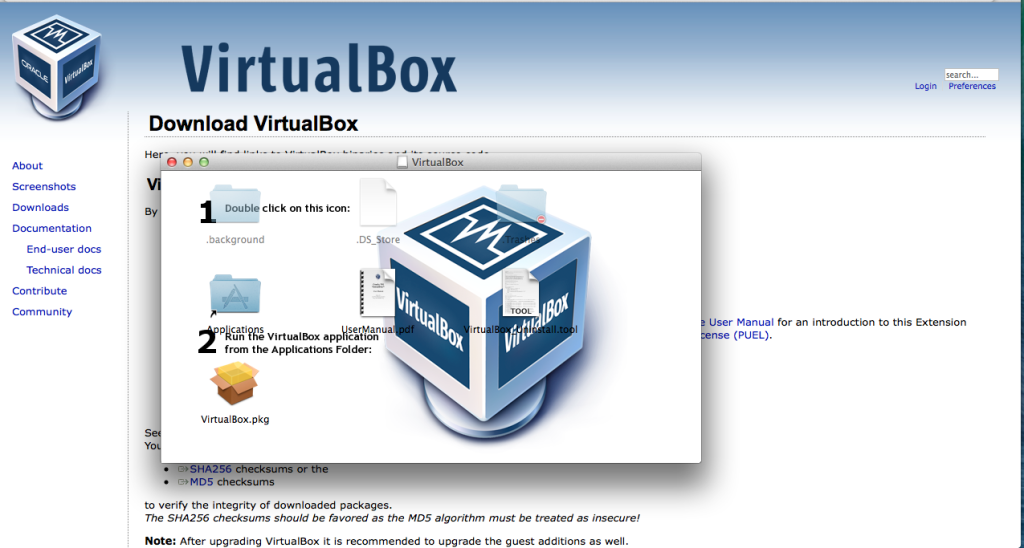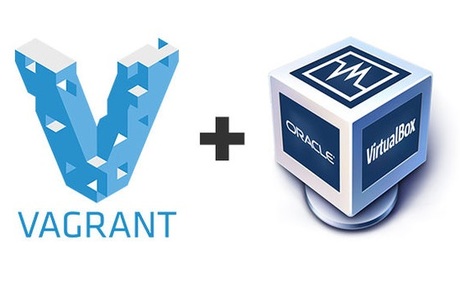

- VAGRANT VIRTUALBOX HOW TO
- VAGRANT VIRTUALBOX INSTALL
- VAGRANT VIRTUALBOX MANUAL
- VAGRANT VIRTUALBOX FULL
- VAGRANT VIRTUALBOX WINDOWS 10
A faster way is to use differencing disks with Hyper-V. For example, a pretty substantial portion of the time spent running vagrant up is spent cloning the virtual hard drive. Hyper-V has some useful features that improve the Vagrant experience. Disclaimer: I personally didn't try either of these methods. For example, rsync works with Cygwin or MinGW. You could also try another synced folder method. If you can't, you can try installing cifs-utils in the VM and re-provision. If you can live without synced folders, here's the line to add to the vagrantfile to disable the default synced folder.Ĭonfig.vm.synced_folder ".", "/vagrant", disabled: true You can check if SMBv1 is enabled with this PowerShell Cmdlet:
VAGRANT VIRTUALBOX MANUAL
Refer to the mount.cifs(8) manual page (e.g. The error output from the last command was: The guest additions are properly installed in the guest andĬan work properly. The "vboxsf" file system is not available. However, if you're like me and have SMBv1 disabled, this will fail: Failed to mount folders in Linux guest.

Trick 4: Shared folders uses SMBv1 for hashicorp/bionic64įor the image used in the "Getting Started" guide (hashicorp/bionic64), Vagrant tries to use SMBv1 for shared folders. => default: Adding box 'base' (v0) for provider: hypervĪn error occurred while downloading the remote file. => default: Box file was not detected as metadata. => default: Box 'base' could not be found. => default: Verifying Hyper-V is enabled. Make sure you delete that line! Otherwise, you'll end up with an error like this:īringing machine 'default' up with 'hyperv' provider. However, there is one line not commented out:
VAGRANT VIRTUALBOX FULL
One additional trick here: vagrant init will create a file that will appear to be full of commented out items. After running vagrant init, modify your vagrant file with the following: nfigure(2) do |config| Fortunately, you can set up your Vagrantfile to automate things for you. Vagrant up -provider hyperv Tip 3: Add the basics to your VagrantfileĪdding the provider flag is a pain to do every single time you run vagrant up. Note: you might run into the error mentioned in Trick 4, so skip to there if you see something like "mount error(112): Host is down".

Vagrant box add hashicorp/bionic64 -provider hypervĪnd when you boot your first Vagrant environment, again, add -provider.
VAGRANT VIRTUALBOX INSTALL
When you install your first box, add -provider: You need to change the " provider" Vagrant uses at a few different points. Unfortunately, the Getting Started guide uses VirtualBox, and you can't run other virtualization solutions alongside Hyper-V.

Instructions for adding an external switch in Hyper-V manager. So if you make it for WiFi, it won't work when you hook up the Ethernet, and vice versa. If you go this route, a friendly reminder that the external switch is tied to a specific network adapter. If that doesn't work, the safest option is to create an external switch via Hyper-V Manager. If you're a Windows Insider, you can try Layered_ICS. Layered_ICS should work (but is under active development), while Layered_NAT doesn't have DHCP.
VAGRANT VIRTUALBOX WINDOWS 10
There are a few NAT networks already created on Windows 10 (depending on your specific build).
VAGRANT VIRTUALBOX HOW TO
Vagrant doesn't know how to set up networking on Hyper-V right now (unlike other providers), so it's up to you to get things working the way you like them. Our official docs list the exact steps and requirements. Tip 0: Install Hyper-Vįor those new to Hyper-V, make sure you've got Hyper-V running on your machine. NOTE: This is a supplement for Vagrant's " Getting Started" guide, not a replacement. My pain is your gain - here are my tips and tricks for getting started with Vagrant on Windows 10 and Hyper-V. I got everything working eventually, but I definitely ran into some issues on the way. Over the past week or two, I took some time to try it out. This was interesting - I was familiar with Vagrant, but I'd never actually used it. The most common tool mentioned (outside of Docker itself) was Vagrant. While I was there, I had the chance to ask developers about their favorite tools. A few months ago, I went to DockerCon as a Microsoft representative.


 0 kommentar(er)
0 kommentar(er)
